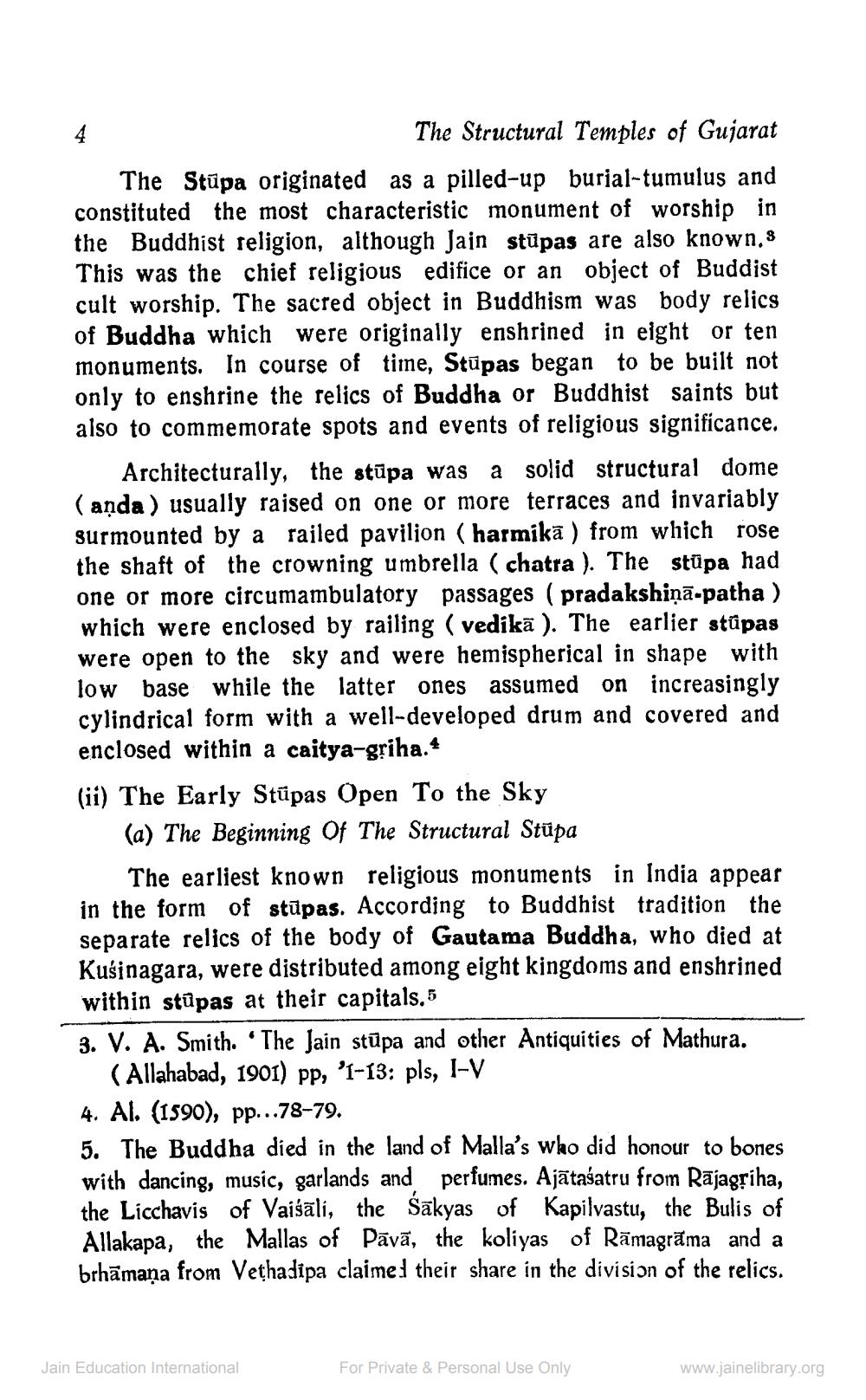________________
The Structural Temples of Gujarat
The Stupa originated as a pilled-up burial-tumulus and constituted the most characteristic monument of worship in the Buddhist religion, although Jain stūpas are also known, s This was the chief religious edifice or an object of Buddist cult worship. The sacred object in Buddhism was body relics of Buddha which were originally enshrined in eight or ten monuments. In course of time, Stūpas began to be built not only to enshrine the relics of Buddha or Buddhist saints but also to commemorate spots and events of religious significance.
Architecturally, the stupa was a solid structural dome (anda) usually raised on one or more terraces and invariably surmounted by a railed pavilion (harmika) from which rose the shaft of the crowning umbrella (chatra). The stūpa had one or more circumambulatory passages (pradakshiṇā-patha) which were enclosed by railing (vedikā). The earlier stūpas were open to the sky and were hemispherical in shape with low base while the latter ones assumed on increasingly cylindrical form with a well-developed drum and covered and enclosed within a caitya-griha.*
(ii) The Early Stūpas Open To the Sky
(a) The Beginning Of The Structural Stupa
The earliest known religious monuments in India appear in the form of stupas. According to Buddhist tradition the separate relics of the body of Gautama Buddha, who died at Kuśinagara, were distributed among eight kingdoms and enshrined within stūpas at their capitals. 5
3. V. A. Smith. The Jain stupa and other Antiquities of Mathura. (Allahabad, 1901) pp, '1-13: pls, I-V
4. Al. (1590), pp...78-79.
5. The Buddha died in the land of Malla's who did honour to bones with dancing, music, garlands and perfumes. Ajataśatru from Rajagriha, the Licchavis of Vaisali, the Sakyas of Kapilvastu, the Bulis of Allakapa, the Mallas of Pava, the koliyas of Ramagrāma and a brhamana from Vethadipa claimed their share in the division of the relics.
Jain Education International
For Private & Personal Use Only
www.jainelibrary.org




